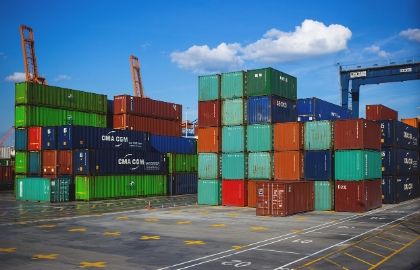What is FCL (Full Container Load)?
Introduction to FCL (Full Container Load):
FCL, or Full Container Load, is a term widely used in international trade to denote a shipment that occupies an entire container. In contrast to LCL (Less than Container Load), where goods from different shippers are consolidated into a single container, FCL shipments are exclusive to a single shipper. This means that the shipper has the advantage of utilizing the entire space of the container, offering more control over the loading and unloading processes and minimizing the risk of damage or loss during transit.

How FCL (Full Container Load) is Typically Charged:
The pricing structure for FCL shipments is generally straightforward compared to LCL shipments. Shippers are charged based on the container size, the destination, and any additional services required, such as customs clearance or inland transportation. The cost per container may vary depending on factors such as the shipping line, seasonality, and market conditions. Additionally, shippers may encounter fees associated with container demurrage or detention if the container is held at the port or terminal beyond the allotted free time.
Common Sizes of FCL (Full Container Load):
FCL shipments are available in various standard container sizes to accommodate different cargo volumes and types. The most commonly used container sizes include:
1. 20-foot Standard Container (20' ST): This container has a length of approximately 20 feet, a width of 8 feet, and a height of 8 feet 6 inches. It is suitable for most general cargo and is widely used in international trade.
2. 40-foot Standard Container (40' ST): With double the length of a 20-foot container, the 40-foot standard container offers ample space for larger shipments or when consolidating multiple smaller loads.
3. 40-foot High Cube Container (40' HC): Similar in length to the standard 40-foot container, the high cube variant provides extra height, measuring at 9 feet 6 inches. This additional height is advantageous for cargo that exceeds the standard height limitations or requires extra cubic capacity.
4. 45-foot High Cube Container (45' HC): This container size offers the same height as the 40-foot high cube but provides additional length, accommodating more cargo while still maintaining the increased vertical space.
Key Considerations for FCL (Full Container Load) Shipments:
When opting for FCL shipments in international trade, shippers should be mindful of several considerations to ensure a smooth and cost-effective logistics process:
1. Optimizing Container Space: Since the shipper pays for the entire container space, it's essential to maximize the utilization of the container to minimize shipping costs per unit of cargo.
2. Proper Packaging and Securing: Proper packaging and securing of cargo within the container are crucial to prevent damage during transit. Utilizing pallets, securing goods with straps or braces, and using dunnage materials can help maintain cargo integrity.
3. Accurate Documentation: Complete and accurate documentation, including commercial invoices, packing lists, and relevant permits or licenses, is essential for customs clearance and regulatory compliance in the destination country.
4. Timely Coordination: Effective communication and coordination with freight forwarders, carriers, and other parties involved in the logistics chain are vital to ensure timely pickup, transit, and delivery of FCL shipments.
In conclusion, FCL (Full Container Load) offers shippers a convenient and cost-effective option for transporting goods in international trade, providing exclusive use of container space and greater control over the shipping process. By understanding the charging structure, common container sizes, and key considerations, shippers can optimize their FCL shipments for efficient and reliable transportation of goods across borders.
Related articles

 WeChat of CBiBank
WeChat of CBiBank